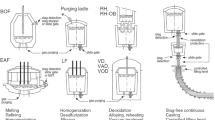Abstract
Today, using recycled materials is a common practice in plastic industries for the sake of saving material cost and pursuing sustainable manufacturing. The recycled materials may have some properties (for example, fluidity and viscosity) significantly different from the primary plastic resin, which may lead to quality problems. An in-process Pokayoke system was developed in this research to monitor injection molding parts’ flash caused by adding a foreign polymer in the lab test, which was used to simulate the recycled plastic. The proposed system employed an accelerometer to capture the injection molding vibration signals. The featured injection molding vibration signals were identified through data analyses, and they were then used as input variables through logistic modeling to predict flash in an injection molding process that utilizes pure polystyrene (PS) mixed with a small portion of low-density polyethylene (LDPE). The testing results indicated that this Pokayoke system could monitor the injection molding flash status caused by the mixed material with approximately 95 % accuracy while the injection molding is in process. This Pokayoke system can help the injection molding machine take immediate actions to avoid wastes caused by flash.
Similar content being viewed by others
References
Groover M (2010) Fundamentals of modern manufacturing, 4th edn. John Wiley and Sons, Inc., Hoboken
Gordon MJ (2010) Total quality process control for injection molding. John Wiley and Sons, Inc., Hoboken
Khan Z, Kamaruddin S, Siddiquee AN (2010) Feasibility study of use of recycled high density polyethylene and multi response optimization of injection moulding parameters using combined grey relational and principal component analyses. Mater Des 31(6):2925–2931
Meran C, Ozturk O, Yuksel M (2007) Examination of the possibility of recycling and utilizing recycled polyethylene and polypropylene. Mater Des 29(3):701–705
Santos J, Wysk R, Torres J (2006) Improving production with lean thinking. John Wiley& Sons, Inc., Hoboken, NJ
Panneerselvam R (2012) Production and operations management, 3rd edn. PHI Learning Private Limited, New Delhi
Tsou JC, Chen WJ (2008) The impact of preventive activities on the economics of production systems: modeling and application. Appl Math Model 32(6):1056–1065
Dudek-Burlikowsha M, Szewieczek D (2009) The Poka-Yoke method as improving quality tool of operations in the process. J Achieve Mater Manuf Eng 36(1):95–102
Chen JC, Black TJ (1996) A fuzzy logic based approach for pokayoke stoplight control in unmanned manufacturing cells. J Manuf Syst 15(1):33–42
Karunakar DB, Darra GL (2008) Prevention of defects in castings using back propagation neural networks. Int J Adv Manuf Tech 39:1111–1124
Sadri R, Taheri P, Azarsa P, Ghavam H (2011) Improving productivity through Mistake-proofing of construction process. Proc. Of CSIT, 5th edn. IASCIT Press, Singapore
Patil PS, Parit SP, Burali YN (2013) Review paper on “Poka Yoke: the revolutionary idea in total productive management”. Int J Eng Sci 2(4):19–24
Al-Araidah O, Jaradat MAK, Batayneh W (2010) Using a fuzzy Poka-Yoke based controller to restrain emissions in naturally ventilated environments. Expert Syst Appl 37(7):4787–4795
Thomas CL, Bur AJ (1999) Optical monitoring of polypropylene injection molding. Polym Eng Sci 39(7):1291–1302
Gonnet JM, Guillet J, Raveyre C, Assezat G, Fulchiron R, Seytre G (2002) In-line monitoring process by dielectric spectroscopy. Polym Eng Sci 42:1171–1179
He B, Zhang X, Zhang Q, Fu Q (2007) Real‐time ultrasonic monitoring of the injection‐molding process. J Appl Polym Sci 107(1):94–101
Zhang JZ, Chen J (2008) Tool condition monitoring in an end milling operation based on the vibration signal collected through a microcontroller-based data acquisition system. Int J Adv Manuf Tech 39(1–2):118–128
Zhang J, Nie H (2009) Experimental study and logistic regression modeling for machine condition monitoring through microcontroller-based data acquisition system. J Adv Manuf Sys 8(2):1–16
Esser B (2010) Vibration based injection molding machine damage detection and health monitoring. US7689385, Pratt & Whitney Rocketdyne, Inc
Zhang Z, Chen J, Zhu J (2005) Development of an in-process gap-caused flash monitoring system in injection molding processes. Int J Adv Manuf Tech 26:1237–1245
Menard S (2002) Applied logistic regression analysis. Sage Publications, Thousand Oaks
Larose DT (2006) Data mining methods and models. John Wiley& Sons, Inc., Hoboken
Caesarendra W, Widodo A, Yang BS (2010) Application of relevance vector machine and logistic regression for machine degradation assessment. Mech Syst Signal Pr 24(4):1161–1171
Liu W, Zhong X, Lee J, Liao L, Zhou M (2011) Application of a novel method for machine performance degradation assessment based on Gaussian mixture model and logistic regression. Chin J Mech Eng 24:1–6
Author information
Authors and Affiliations
Corresponding author
Additional information
All rights reserved. This study, or parts thereof, may not be reproduced in any form without written permission of the authors. This paper has not been published nor has it been submitted for publication elsewhere.
Rights and permissions
About this article
Cite this article
Zhang, J.Z. Development of an in-process Pokayoke system utilizing accelerometer and logistic regression modeling for monitoring injection molding flash. Int J Adv Manuf Technol 71, 1793–1800 (2014). https://doi.org/10.1007/s00170-013-5604-7
Received:
Accepted:
Published:
Issue Date:
DOI: https://doi.org/10.1007/s00170-013-5604-7




